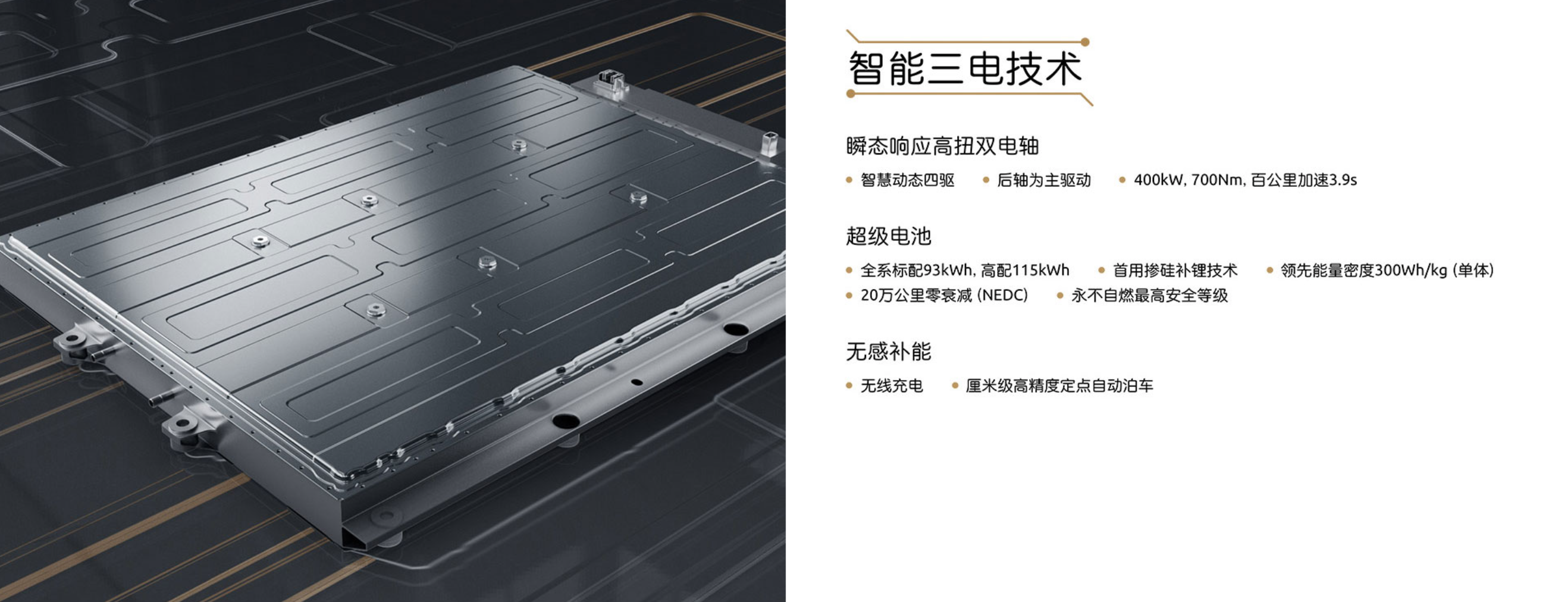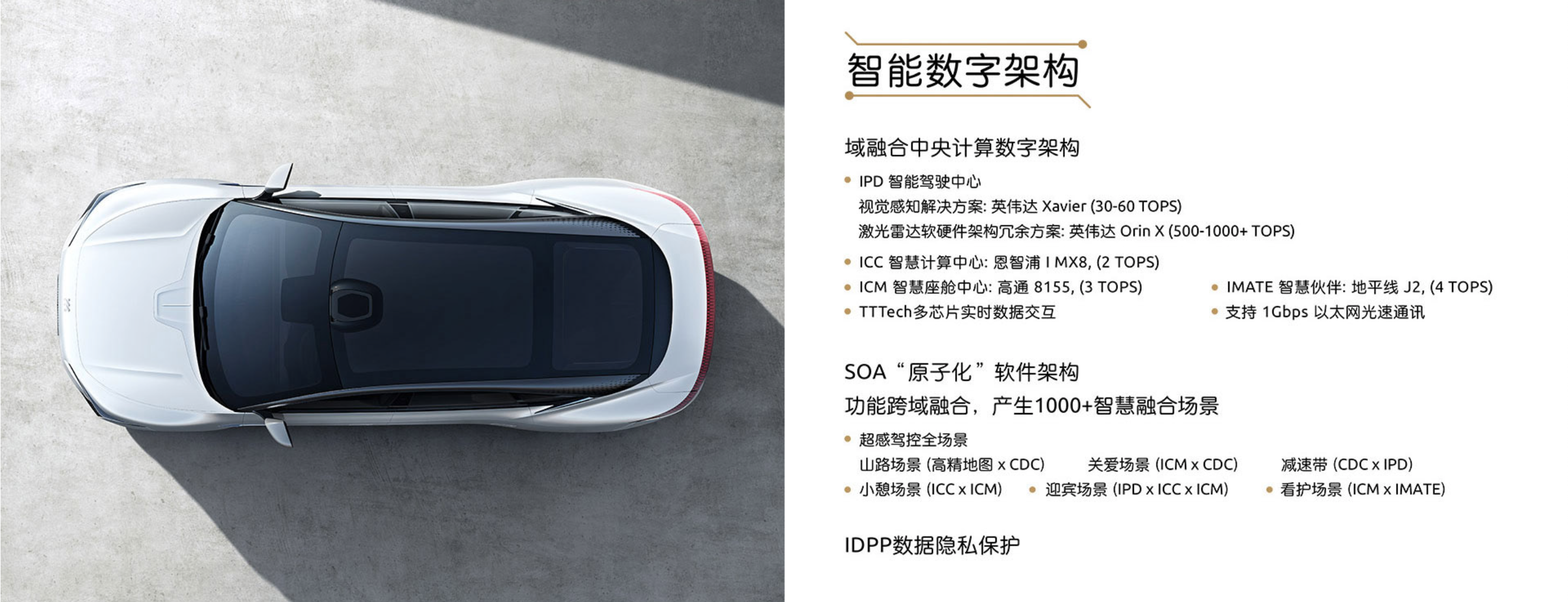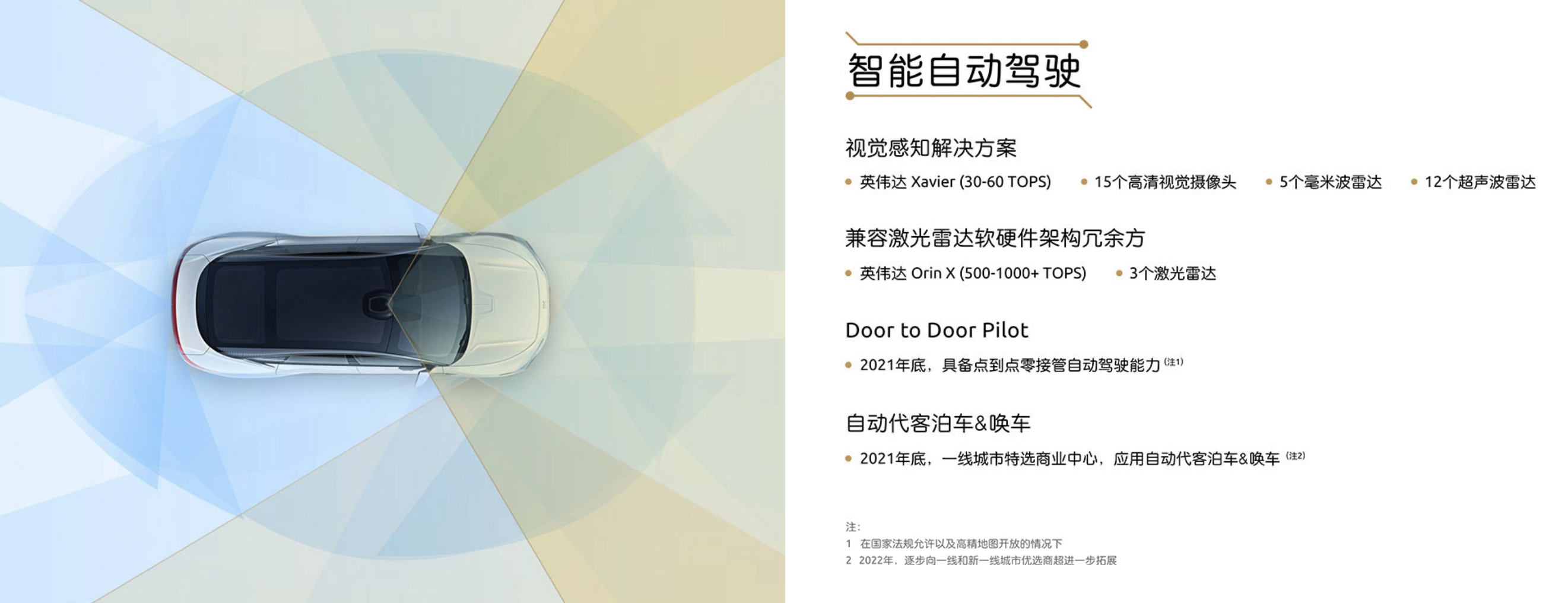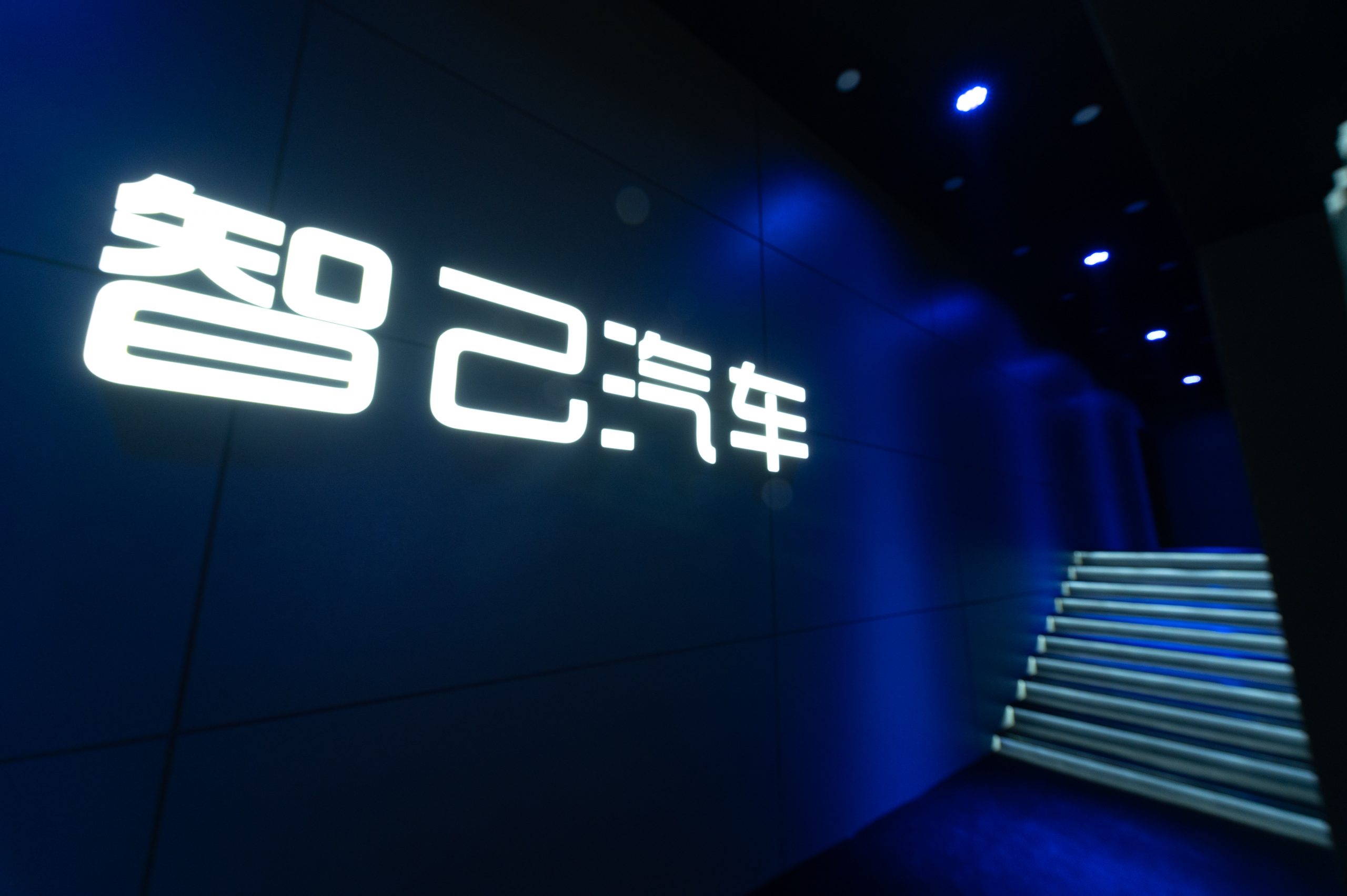On January 13th, IM Auto launched its smart pure electric vehicle brand “IM IM” and released two mass-produced models, a pure electric sedan and a pure electric SUV.
Both models are equipped with dual motor four-wheel drive, with the rear axle as the main drive, a power output of 400 kW, torque of 700 N·m, and 0-100 km/h acceleration in 3.9 seconds. They are also equipped with a full-aluminum chassis with front double wishbone and rear five-link suspension, a wire-controlled brake system and wire-controlled AKC rear-wheel steering system, as well as a CDC intelligent electronically controlled suspension system. All windows of the cars are designed with double-layer glass.

Both models come standard with a 93 kWh battery pack, and the high-end version is equipped with a 115 kWh battery pack. The “silicon-doped lithium” technology is used, and the official has stated that it can achieve a single-cell energy density of 300 Wh/kg, and zero attenuation over a mileage of 200,000 kilometers. The new architecture has the highest bandwidth and can support a range of nearly 1,000 kilometers.
Regarding battery safety, IM utilizes optimized cell material formulas, patented grouping insulation and flame retardant technologies, as well as M.A.S. one-piece cast-aluminum battery shell encapsulation technology, in combination with BMS 7×24-hour cloud-end collaboration management. When any anomalies are detected, the system will sound an alarm and prohibit use.
As for energy replenishment, IM plans to equip the vehicle with an 11 kW wireless charging system for mass production, which can charge 10.5 kWh in one hour, equivalent to 70-80 kilometers of range under NEDC conditions. Combined with the fixed-point automatic parking function, the vehicle can automatically park in the charging space for replenishment.

IM Auto stated that it has multiple core technologies to support the deep intelligence of the whole vehicle. In terms of architecture, IM Auto adopts a domain fusion central computing digital architecture to achieve full vehicle OTA functions, and based on SOA services to generate intelligent integration scenarios.
In terms of the operating system, IM Auto uses the boundary-free interaction IMOS operating system with a 12.8-inch 2K AMOLED curved smart control center screen. The overall image sensor has 150 million pixels, supporting 180° distortion-free super-wide-angle. The lighting system is composed of 2.6 million pixel DLP + 5000 LED ISC.
In terms of autonomous driving, IM Auto is equipped with NVIDIA Xavier (30~60 Tops), 15 HD cameras, 5 millimeter-wave radars, and 12 ultrasonic radars. It is also compatible with a redundancy solution for lidar hardware and software architecture and supports the upgrade to NVIDIA Orin X (500~1000+ Tops) and 3 lidars.
In terms of autonomous driving scenarios, IM Auto stated that it will integrate functions such as “intelligent parking and city navigation + expressway navigation”. Based on the unique Chinese road conditions and driving habits, it uses Data-Driven core algorithm architecture to automatically record, upload, annotate, model training, and iterative updating.
Functions include memory parking and recall, automatic valet parking, red light and green light recognition, automatic pass through intersections, anti-cut-in, automatic obstacle avoidance, auto lane change, overtaking, on and off ramp, as well as Super Pilot, Traffic Jam Pilot, rear-end collision warning and other features.
IM Auto is expected to have point-to-point automatic driving capabilities by the end of 2021, subject to national regulations and the release of high-precision maps.
According to the plan, the mass-produced version of the IM pure electric sedan will be available for pre-order during the Shanghai Auto Show in April this year and will be launched at the end of this year, with delivery in 2022. The pure electric SUV will be officially launched in 2022.
Source: IM Auto
This article is a translation by ChatGPT of a Chinese report from 42HOW. If you have any questions about it, please email bd@42how.com.
